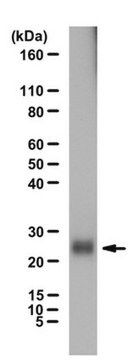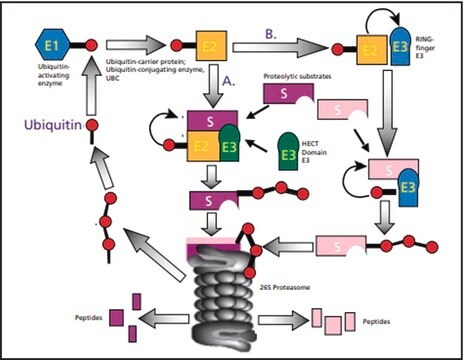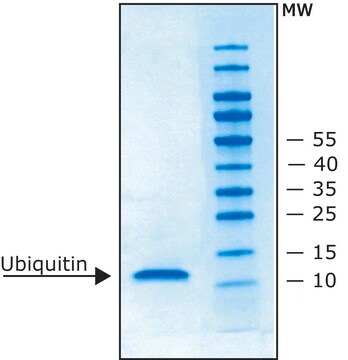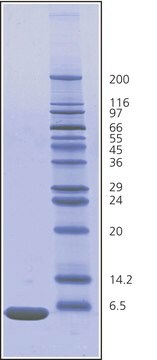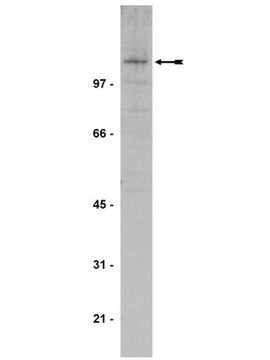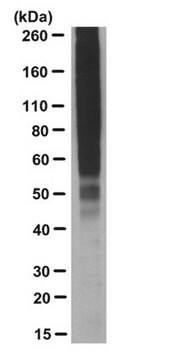07-375
Anti-Ubiquitin Antibody
Upstate®, from rabbit
About This Item
Prodotti consigliati
Origine biologica
rabbit
Livello qualitativo
Forma dell’anticorpo
purified immunoglobulin
Tipo di anticorpo
primary antibodies
Clone
polyclonal
Stato
(Purified rabbit polyclonal antibody in buffer containing 0.1 M Tris-Glycine (pH 7.4), 150 mM NaCl with 0.05% sodium azide with 30% glycerol.)
PM
(~8 kDa observed. Uncharacterized bands may be observed in some lysate(s).)
Reattività contro le specie
bovine, human
Reattività contro le specie (prevista in base all’omologia)
vertebrates, (Predicted to react with Vertebrates.)
Produttore/marchio commerciale
Upstate®
tecniche
western blot: suitable
Isotipo
IgG
N° accesso NCBI
N° accesso UniProt
Condizioni di spedizione
dry ice
modifica post-traduzionali bersaglio
unmodified
Informazioni sul gene
human ... UBAP2(55833)
Descrizione generale
Specificità
Immunogeno
Applicazioni
Signaling
Ubiquitin & Ubiquitin Metabolism
Qualità
Descrizione del bersaglio
Linkage
Stato fisico
Stoccaggio e stabilità
Risultati analitici
All tissue
Altre note
Note legali
Esclusione di responsabilità
Non trovi il prodotto giusto?
Prova il nostro Motore di ricerca dei prodotti.
Codice della classe di stoccaggio
10 - Combustible liquids
Classe di pericolosità dell'acqua (WGK)
WGK 1
Certificati d'analisi (COA)
Cerca il Certificati d'analisi (COA) digitando il numero di lotto/batch corrispondente. I numeri di lotto o di batch sono stampati sull'etichetta dei prodotti dopo la parola ‘Lotto’ o ‘Batch’.
Possiedi già questo prodotto?
I documenti relativi ai prodotti acquistati recentemente sono disponibili nell’Archivio dei documenti.
I clienti hanno visto anche
Il team dei nostri ricercatori vanta grande esperienza in tutte le aree della ricerca quali Life Science, scienza dei materiali, sintesi chimica, cromatografia, discipline analitiche, ecc..
Contatta l'Assistenza Tecnica.